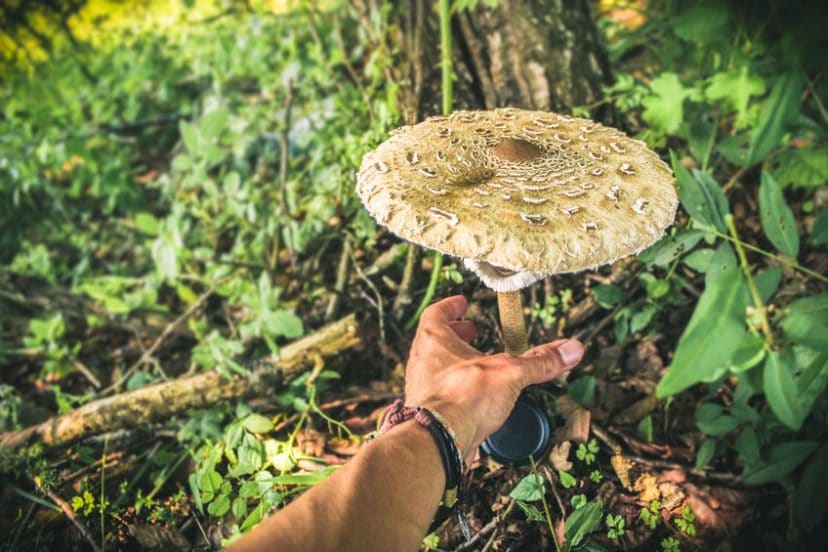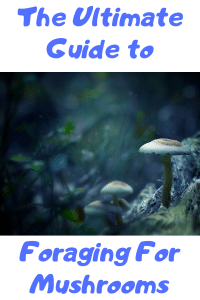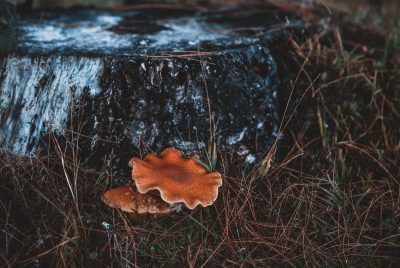The Reishi mushroom, or Ganoderma Lucidum, has been used in Asia for its medicinal value for…
Ultimate Guide to Foraging for Mushrooms

Foraging for mushrooms can yield not only a tasty treat, but they also have medicinal value in many cases. Some believe being a mushroom hunter is a worth-while hobby too. So if you want to eat foraged mushrooms, than this guide is a must read for you.
Learned Traits of a Mushroom Hunter
Being proficient at foraging for mushrooms requires you to have specific characteristics. For starters, you must have a firm grasp on what exactly you’re looking for when you are out in the wilderness looking for them. You need to be aware of the environment you’re in and contrast that to what type of fungi will grow under those conditions. Once you’ve identified the types of fungi native to a particular area, you must have patience and be vigilant in finding them.
Another important reason for having an awareness for what type of fungi your searching for is that many of them are poisonous. This aspect makes foraging for mushrooms extremely complex; especially, when you consider the fact that many species have minute differences between being safe or poison. In some instances, a particular species can be safe to eat in one region but poisonous in another one. So traits like patience, vigilance, and awareness are key to not only finding specific mushrooms, but keeping you alive after eating them.
The more knowledge you have before foraging for mushrooms the better. Remember to always keep a guide with you before attempting to hit the wilderness.
How to Identify Poisonous Mushrooms
Even though there are 70 to 80 different species of poisonous fungi, there are only a handful of poisonous mushrooms that can actually kill you. However, this should not stop you from choosing to forage them. Knowledge about what you’re looking for and about your surroundings will always keep you safe.
You can purchase a great foraging guide to help identify the wrong fungi at Mushrooms of The NorthEast: A Simple Guide To Common Mushrooms
Many poisonous mushrooms have a distinctly bitter and unsavory flavor to them. If you have an inclination that you might have consumed one, immediately remove it from your mouth and follow poison control procedures. Under no circumstance should you eat more than a small piece of a mushroom that you have no completely validated as being safe.
Here is a list of the 7 deadliest poisonous mushrooms on our planet. You can do a quick online search for any of them to find out their specific characteristics and observable features.
- Death Cap (Amanita Phalloides)
- Webcaps (Cortinarius species)
- Conocybe filaris
- Destroying Angels (Amanita species)
- Autumn Skullcap (Galerina Marginata)
- Deadly Daperling (Lepiota brunneoincarnata)
- Podostroma cornu-damae
When many of these species of poisonous mushrooms are eaten, they may cause symptoms that include convulsions, diarrhea, liver and kidney failure, vomiting, delirium, and often lead to death. So when foraging for mushrooms, avoid these species at all cost.
Foraging Edible Mushrooms
There are many edible species of fungi found throughout the world and many have significant medicinal value for our body. Again, we cannot stress the importance of properly identifying foraged mushrooms before attempting to eat them. Knowledge is your best friend when foraging for mushrooms.
The most sought-after types of edible mushrooms are White Buttons, Portabellas, Morels, Creminis, and Truffles. These fungi are usually easy to find and do not require advanced knowledge of foraging in order to attain them.
However, other species like Lion’s Mane and Reishi mushrooms are a bit tricky to find. While these medicinal mushrooms are edible, they are also very scarce to source. They usually end up being sold in some online marketplace in extract form as a supplement.
Edible mushrooms are great to cook with and offer up a great addition to mostly any meal. There are different methods of prepping and cooking many of these too. Though, there are tons of recipes for just about any type of edible mushroom on the planet online.
Like This Article? Pin it on Pinterest

Foraging Equipment
Foraging for mushrooms means you will be in the wilderness and you will require certain supplies. Knowing what to have when you are alone in the wild will make foraging an efficient and enjoyable experience.
Below is a list of must have items for the beginner forager:
- Wax paper
- Wax paper bags
- 10x hand lens
- Hunting or Utility Knife
- Field Guide on Mushroom Species
- Insect Repellant
- Index Cards
- Writing Utensil
Of course, this is in addition to the general survival gear you should have packed for a journey in the woods. Having these items will make foraging for mushrooms a very simple endeavor.
Conclusion
Foraging for mushrooms proficiently requires learning a few traits in order to make it a safe and enjoyable experience. Knowledge of the environment as well as the species indigenous to that area is a key aspect of being a good mushroom hunter. Also knowing the difference between what species of fungi are edible or poisonous is super important. Remember to not eat any type of mushroom until you can first identify it.



